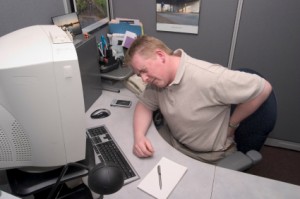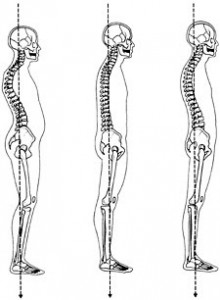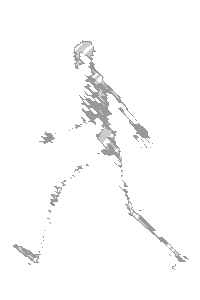
Are you always trying to find a comfortable position for your head?
Do your shoulders feel tight and stiff?
Do your neck and back ache on a regular basis?
The culprit to all that ails you may be your posture…
I could tell you all the things that could be wrong with your posture. But I’m not going to do that because I’m pretty sure you already have a few good ideas.
If you sit for work, make sure your chair or workstation is adjusted for your body.
Chairs, desks and computer monitors are NOT all built for one  body type. And I am going to to make a guess that Bob from accounting doesn’t have the same body structure as you. In fact, you will likely need to adjust the height of your fancy or not so fancy chair, you may have to rearrange the items on your desk and you will almost certainly have to position your monitor for your own personalized optimal viewing angle.
body type. And I am going to to make a guess that Bob from accounting doesn’t have the same body structure as you. In fact, you will likely need to adjust the height of your fancy or not so fancy chair, you may have to rearrange the items on your desk and you will almost certainly have to position your monitor for your own personalized optimal viewing angle.
Don’t buy in to the one size fits all mentality.
While that may work for all those fancy items you see on late night infomercials, it doesn’t work for most items that have to be purchased during regular business hours.
One size very seldom fits all.
Get neutral. Spine that is.
 Neutral spine postures start at your hips and pelvis. From there, your chest should be up up (don’t let it cave it – be proud!), your head should be held long and tall with your chin slightly tucked in. Think of a string attached to the crown of your head pulling you up to the ceiling. This position should place your nose as the farthest point forward.
Neutral spine postures start at your hips and pelvis. From there, your chest should be up up (don’t let it cave it – be proud!), your head should be held long and tall with your chin slightly tucked in. Think of a string attached to the crown of your head pulling you up to the ceiling. This position should place your nose as the farthest point forward.
If you’re reading this at work, stop for a minute and have a look around you. You’ll see that many of your colleagues lead with their chins.
This will help you avoid slouching, which in itself isn’t bad.
It only becomes a problem when you do it ALL THE TIME.
Which is a perfect lead in to the most important lesson from today’s blog post:
The best posture is the one that keeps changing.
So make sure you change your position often and avoid holding any postures for prolonged periods of time.
Yes, this means when you’re driving, sitting on the couch watching TV, or working at your desk.
So, tell me, how does YOUR posture stack up?
Dev Chengkalath, Physiotherapist





(inside Peak Performance Golf)